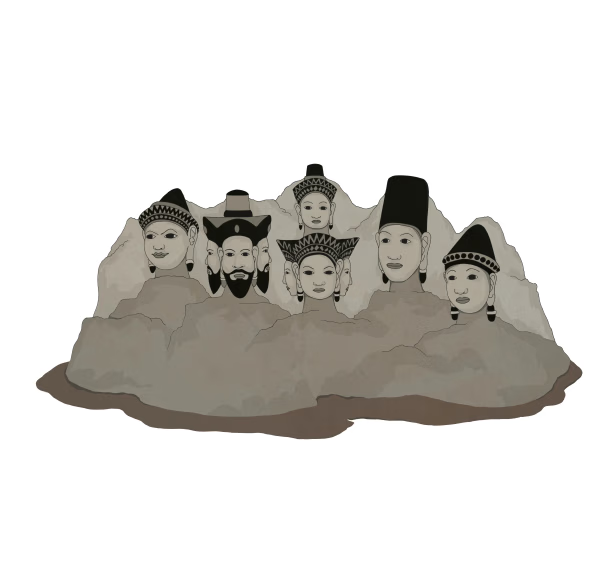
Hinduism in Khmer Society
Hindu Deities of the Vat Phou-Champasak Site (Illustration by artist Son Ho-yong).
Published 2024.08.14 by 유다연
ອະທິບາຍ
In Khmer society, Hinduism, particularly Shaivism, was so widely practiced that it almost held the status of a state religion. At the Vat Phou-Champasak site, Shaiva temples, sanctuaries, and hermitages from both the pre- and post-Khmer Empire periods are overwhelmingly abundant. In South India, Shiva is revered as Nataraja, the "Dancer of the Universe" who performs the dance of destruction. In the Kathmandu region of Nepal, known as the land of the Himalayas filled with wild beasts, Shiva is worshiped as Pashupati, the "Lord of Beasts," who holds a special position as a national deity. Among the Khmers, the deity Bhadreshvara was particularly venerated, and the Vat Phou-Champasak site was the origin and most important sacred site of this cult. Many inscriptions found at Vat Phou-Champasak and other Khmer sites convey the exalted status of this unique national deity.
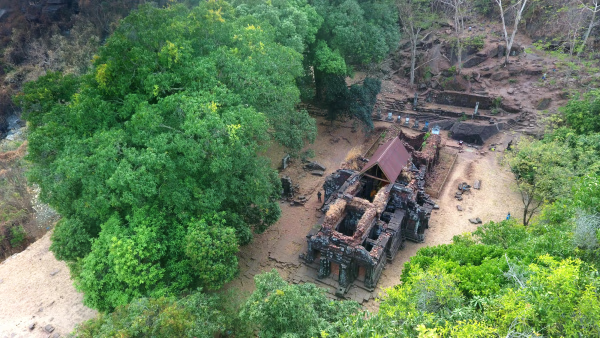
Major Hindu Deities in the Main Shrine.
Just as Lord Shiva in the sacred Mount Kailasa of the Indian Himalayas bestowed infinite compassion upon humanity, the Linga rock formations of Lingaparvata were believed to be the manifestation of Bhadreshvara's compassion for the Khmer people. Similarly, as the sacred Ganges River, which began flowing for the benefit of humanity through Shiva's compassion, the Mekong River was also considered a life-giving river full of compassion. The land between the sacred mountain and river was regarded as Kurukshetra, a holy place where even the gravest of sinners could cleanse their sins. The Tomo Temple, dedicated to Parvati, Shiva's consort and the supreme goddess, was built across the river, completing the Hindu utopia where the dynamic energy of yin and yang flourished. Lingaparvata, the Vat Phou temple complex, the massive barays, the ideal city, the sacred river, and the temple of the mother goddess were meticulously arranged along the east-west axis, where the sun rises and sets.

[Indra]
Indra is one of the oldest gods in Hinduism. In the Vedic period, Indra was the most powerful deity and the king of heaven, located on Mount Meru, with Amaravati as its capital. Indra is the god of thunder, lightning, and rain, and he is often depicted holding a vajra (thunderbolt) and riding a white elephant named Airavata.
Khmer kings frequently adopted the name Mahendra, meaning "Great Indra," as part of their royal titles, and the name Mahendra was also attached to many mountains and cities.

[The Emergence of the Linga]
The Hindu Trimurti carved on the rock near the main shrine is one of the masterpieces of Vat Phou-Champasak, showcasing a high level of artistry. This scene depicts the "Emergence of the Linga."
One day, Vishnu and Brahma were engaged in a contest to determine who was more powerful. At that moment, Shiva appeared in the form of a pillar of fire. Brahma transformed into a swan and flew upwards, while Vishnu transformed into a wild boar and descended into the earth, competing to see who could find the end of the flame first. Neither Brahma nor Vishnu could find the end of the fire. Vishnu admitted his defeat, but Brahma lied, claiming that he had found the end of the flame. Enraged by this, Shiva transformed into Kala Bhairava, the god of destruction, and cut off one of Brahma's five heads. In the relief, Brahma on the left is depicted with four heads, one less than the central figure of Shiva.
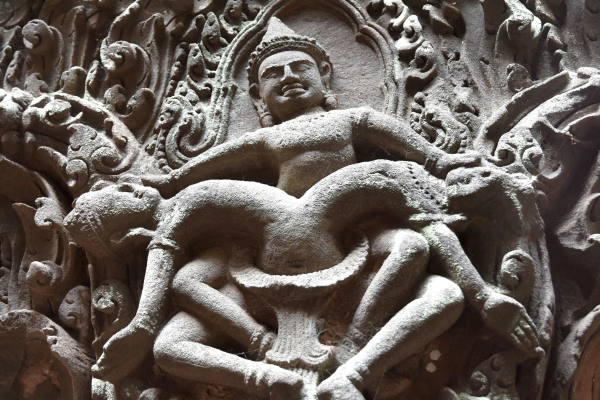
[Bhima's Punishment of Jarasandha]
King Jarasandha was a very cruel ruler. He was a near-immortal being who could only be killed if his body was split in two. Bhima challenged King Jarasandha to a wrestling match, and the two fought evenly for 13 days. On the 14th day, Krishna appeared and revealed King Jarasandha's weakness to Bhima. Following Krishna's advice, Bhima split Jarasandha's body in two, but the pieces rejoined. At this point, Krishna advised Bhima to run far away with one half of the body after splitting it. Finally, Bhima was able to defeat the tyrannical King Jarasandha.
Such episodes, which emphasize the warrior-like strength of Bhima, were popular themes in Khmer temples, and they are believed to be connected to the military culture of the Khmer Empire at the time.
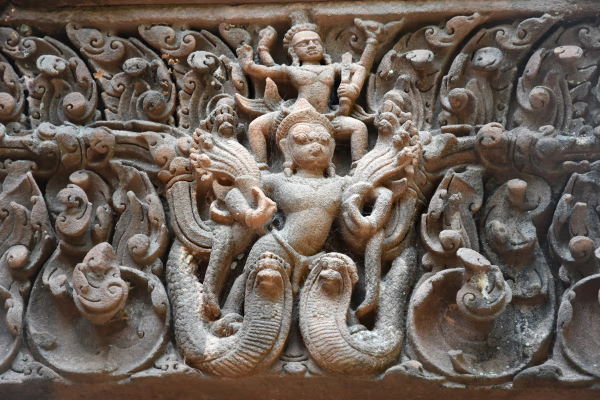
[Vishnu Riding Garuda]
The inscription found within the That Samphang temple describes a scene where a Khmer king is depicted vanquishing his rival king, stating, "Just as Garuda slaughters the serpents."
Garuda is a legendary bird from ancient Indian mythology, known as the king of birds. He is primarily associated with Vishnu and is depicted either as a bird or as a human figure with wings and a beak. Just as an eagle swiftly attacks a snake, Garuda is known for protecting the world from evil reptiles, particularly serpents.
Garuda, along with other mythological creatures like Naga and Makara, is one of the frequently depicted mythical animals in Khmer temples.
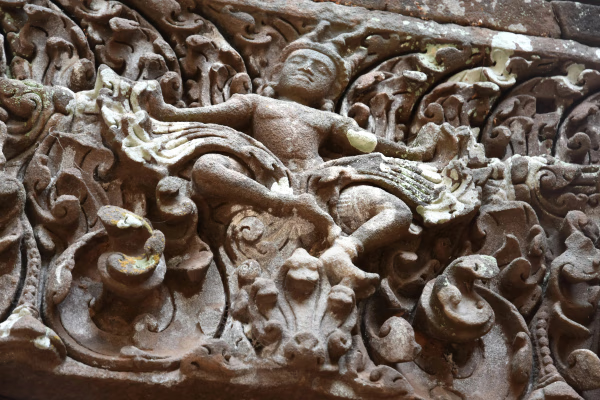
[Krishna and the Kaliya Serpent]
Krishna was adopted by the Yashoda couple to protect him from the persecution of Kamsa, the king of Mathura. From a young age, Krishna overcame numerous adventures and dangers. He saved the villagers by lifting Mount Govardhan and killed the poisonous serpent Kaliya, who lived in the Yamuna River, by dancing on him, thus purifying the river.
These heroic tales from Krishna's childhood, along with his divine acts in adulthood, were highly popular in Hindu society.
ການນິດສະການທີ່ກ່ຽວຂ້ອງ
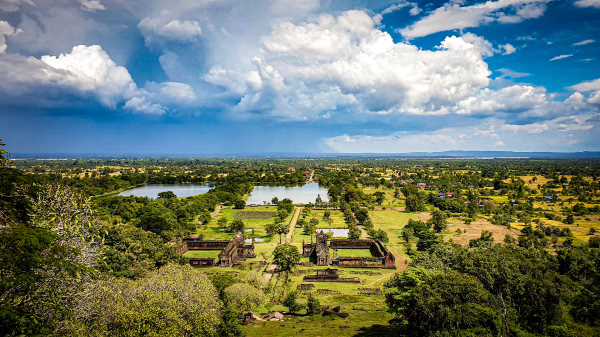
Natural History
Online Exhibition of the Vat Phou Champasak Ruins and the Excavation of Hong Nang Sida
The Vat Phou - Champasak site lies on fertile alluvial plains on the banks of the Mekong River, and its mountainous core is the eastern outlier of the Dângrêk Range, which is home to the Phou Kao Mountains that rise up to an altitude of 1,416 meters.
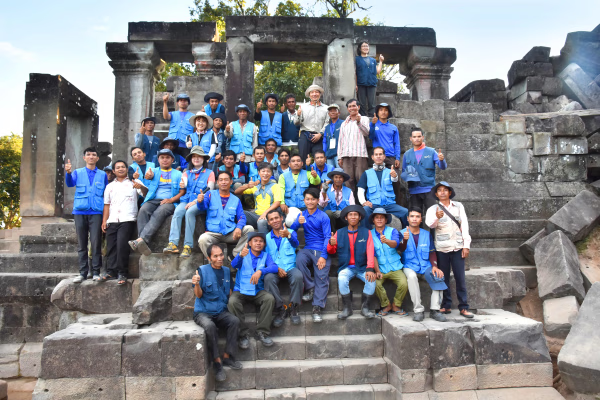
Natural History
Lao-Korea Cooperation Project : Hong Nang Sida Temple
Since 2013, the Cultural Heritage Administration and the Korea Cultural Heritage Foundation have been working on a heritage restoration project at the World Heritage Site “Vat Phou and Associated Ancient Settlements within the Champasak Cultural Landscape” in Lao PDR. The project focuses on restoring the collapsed stone structure called Hong Nang Sida, located in the southern part of the Vat Phou Temple Complex. This site, also known as the “Temple of Princess Sida,” is gradually regaining its original appearance thanks to the ongoing restoration efforts by a Korean research team.
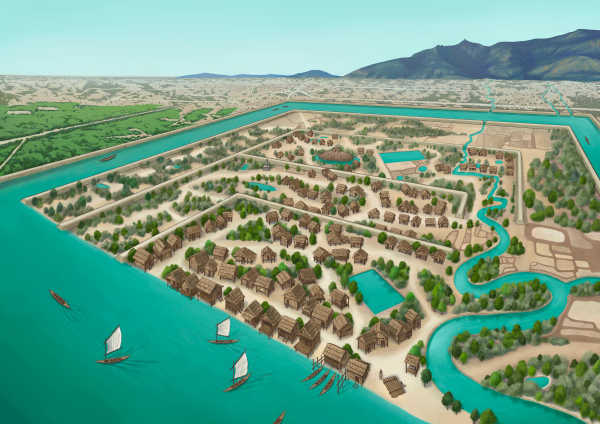
Natural History
Sacred River
The archaeological site of the ancient city is situated on the plains adjacent to the Mekong River. The city was surrounded by two layers of brick and earthen ramparts, with a moat in between. These ramparts measured approximately 2.4 km from north to south and 1.8 km from east to west, with the best-preserved sections standing up to 6 meters high and 14 meters thick. The walls and moats were likely constructed to manage and utilize the waters from the Phou Kao Mountains' tributaries.